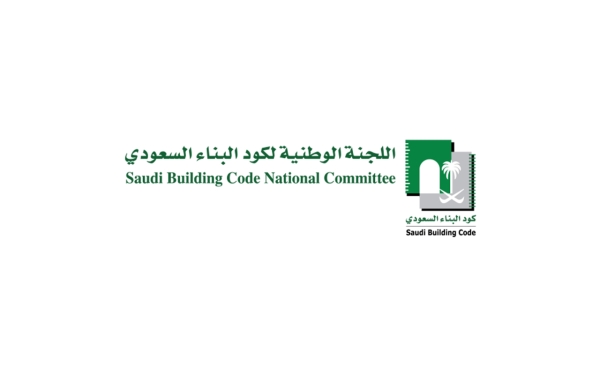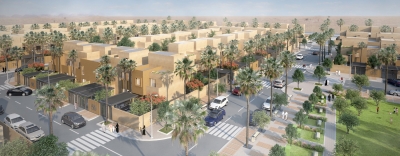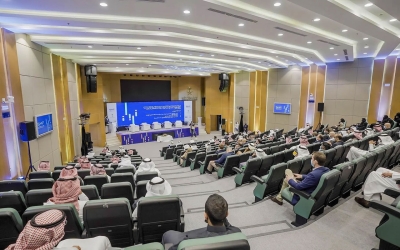
The National Committee for the Saudi Building Code

The National Committee for the Saudi Building Code is a specialized technical committee established to prepare and develop a unified building code to ensure minimum safety standards for lives and property and to promote the efficient use of water and energy in the Kingdom of Saudi Arabia.
The formation of the National Committee for the Saudi Building Code
The National Committee for the Saudi Building Code was formed in accordance with Article Five of the General Plan of the National Committee for the Saudi Building Code, issued by the Council of Ministers Resolution No. 174 dated September 3, 2001, and amended by Resolution No. 459 dated August 16, 2008. Additionally, the Council of Ministers Resolution No. 372, dated March 28, 2018, added a representative from the Ministry of Energy, Industry, and Mineral Resources (currently the Ministry of Energy) to the membership of the National Committee for the Saudi Building Code.
Membership of the National Committee for the Saudi Building Code
The National Committee for the Saudi Building Code is chaired by the Governor of the Saudi Standards, Metrology, and Quality Organization (SASO). It includes representatives from the following entities: the Ministry of Interior, the Ministry of Municipalities and Housing, the Ministry of Transport and Logistics Services, the Ministry of Environment, Water, and Agriculture, the Ministry of Commerce, the Ministry of Energy, King Abdulaziz City for Science and Technology (KACST), the Saudi Standards, Metrology and Quality Organization, the Royal Commission for Jubail and Yanbu, the Saudi Council of Engineers, and the Saudi Geological Survey. Additionally, four specialists from Saudi universities and a private sector representative nominated by the Federation of Saudi Chambers are also members of the committee.
Strategic objectives of the National Committee for the Saudi Building Code
The strategic objectives of the National Committee for the Saudi Building Code are: to continue periodically updating the Saudi Building Code for all specializations, to continue implementing the general plan of the National Committee for the Building Code, to prepare a plan to assess and improve the seismic efficiency of buildings in seismically active areas, and to propose regulations that require public and private entities to apply the principles and standards for designing earthquake-resistant buildings and structures in the Kingdom.
The reference for the Saudi Building Code
On June 30, 2002, the National Committee for the Saudi Building Code approved using codes from the International Code Council (ICC) as the basis for the Saudi Building Code, along with the International Electrotechnical Commission (IEC) code as the foundation for the electrical code due to its comprehensiveness and relevance to conditions similar to those in the Kingdom. This decision was made after reviewing several international and Arab references and codes, such as the ICC Building Code issued in the United States and the European Code (EC), as well as examining the experiences of other countries in developing their building codes. The committee also considered the specifications and building systems of local private and governmental entities, along with the results of national research projects.
The National Committee has organized numerous conferences, seminars, and workshops aimed at introducing the requirements and conditions of the code and its role in ensuring the safety of buildings and protecting lives and property. Several papers on the code have been presented at various conferences and seminars, alongside participation in specialized construction exhibitions to raise awareness about the code's stipulations and requirements, highlighting its benefits in serving the nation and its citizens. Additionally, the publication of the "Saudi Building Code" magazine has contributed to further promoting awareness of the code's objectives.
The General Secretariat of the National Committee for the Saudi Building Code
A permanent secretariat was established for the National Committee for the Saudi Building Code within the Saudi Standards, Metrology, and Quality Organization. A full-time secretary was appointed along with an assisting team through secondment, delegation, or contracting. The secretariat is responsible for organizational and administrative preparations and coordination.
Among the mandates of the General Secretariat are: taking the necessary administrative and financial actions to implement the work plan approved by the National Committee in accordance with its authority, proposing candidates for membership in the advisory and technical committees in coordination with the National Committee and relevant governmental and private sector entities, submitting the final proposal to the National Committee for approval, issuing administrative decisions from the Committee Chairman, preparing and organizing the agenda for the National Committee and its affiliated committees, informing them of the issues on the table, following up on the work of the technical committees, preparing periodic reports on achievements and recommendations, submitting them to the Chairman of the National Committee, preparing periodic reports, following up on the implementation of the National Committee's decisions, recording discussions and recommendations, and preparing minutes for the National and Advisory Committee meetings.
The Advisory Committee of the General Secretariat of the National Committee and its Technical Subcommittees
The Advisory Committee was restructured on April 27, 2016, consisting of members from the National Committee for the Saudi Building Code and the heads of technical committees from all relevant government and private sectors, including universities and research centers in the Kingdom. The Advisory Committee is responsible for studying, proposing, and drafting the preparation of the code both technically and administratively, overseeing its application, following up on its implementation, updating, revising, and submitting its recommendations to the National Committee.
Eleven technical committees emerged from the Advisory Committee, including the Architectural and Administrative Technical Committee, the Energy Efficiency Technical Committee, the Fire Safety Requirements Technical Committee, the Structural Technical Committee, the Mechanical Technical Committee, the Sanitary Technical Committee, the Electrical Technical Committee, the Earthquake Requirements Technical Committee, the Existing Buildings Technical Committee, the Green Buildings Technical Committee, and the Residential Buildings Technical Committee.
Saudi Building Code
In 2004, the general framework for the Saudi Building Code was approved according to two main classifications. The first classification, represented by the letters (ك ب س ), includes the minimum required engineering standards for design, construction, operation, and maintenance, which were developed and formulated in line with the requirements and laws in effect in the Kingdom. The second classification, represented by the letters (SBC), covers the details of design and construction methods.
To maximize the benefits of the Saudi Building Code, which helps maintain the long-term quality of structures and prevents many issues within the construction system in general, the Saudi Building Code Application Law was issued in 2017.
The law granted the application of the code effectiveness across the Kingdom, ensuring its implementation in all establishments. According to Article Two, the code applies to all construction work in both the public and private sectors, including the design, execution, operation, maintenance, and modification of buildings. It also applies to existing buildings in renovation, change of use, expansion, or modification cases.
Objectives of the Saudi Building Code
The National Committee for the Saudi Building Code aims to achieve several strategic objectives aligned with the aspirations for constructing buildings that meet the highest quality and safety standards. These objectives include: continuously updating the Saudi Building Code for all disciplines, implementing the general plan of the National Committee for the Saudi Building Code, preparing a plan to assess and improve the seismic efficiency of buildings located in seismically active areas, and developing the content of the Saudi Building Code to enhance the efficiency, safety, durability, and sustainability of buildings.
The objectives of the Saudi Building Code include extending the lifespan of buildings by applying the rules, requirements, and standards of the Saudi Building Code and using Saudi standard specifications. Additionally, the code aims to optimize energy consumption, reduce building operating and maintenance costs, enhance building resilience against natural disasters, and propose laws and executive rules that obligate public and private entities to apply the code's requirements and the design principles and standards for earthquake-resistant buildings and structures in the Kingdom. Continuous monitoring also supports the achievement of these objectives.
Initiative to implement the Saudi Building Code
The first initiative to implement the Saudi Building Code came from the Ministry of Municipalities and Housing, which announced in 2020 the start of the code’s application for residential buildings as a guideline. The timeline for mandatory enforcement depends on the National Committee for the Saudi Building Code.
The National Committee for the Saudi Building Code set July 1, 2021, as the date for enforcing the Saudi Building Code for residential buildings. The Ministry of Municipalities and Housing, along with relevant entities, implements the code to meet several conditions and requirements, including the associated executive regulations and construction-related appendices.
The code applies to all construction activities in both the public and private sectors for new buildings, including design, execution, operation, maintenance, and modification. It also applies to existing buildings in renovation, change of use, expansion, or modification cases. The Saudi Building Code aims to establish the minimum requirements and conditions that ensure a baseline level of safety and health through the durability, stability, and resilience of buildings and structures. It also focuses on facilitating accessibility, providing a healthy environment with adequate lighting and ventilation, optimizing energy use, implementing thermal insulation, and protecting lives and property from the risks of earthquakes and other hazards associated with buildings.
The ministry collaborates with relevant entities in the implementation of the code, including the Ministry of Interior (General Directorate of Civil Defense), the Ministry of Energy, and the Saudi Standards, Metrology, and Quality Organization. The executive regulations for the Saudi Building Code Application Law have outlined the roles of the relevant entities in carrying out their tasks and responsibilities in accordance with their laws.
The Ministry of Municipalities and Housing has incorporated a range of enabling programs, including providing engineering office services through the Developers Services Center "Etmam", electronic qualification and instant licensing of engineering offices, as well as the "Certified Contractor" and "Waed" programs, in addition to the upgraded contractor classification services available on the "Balady" platform.
Inspection in accordance with the Saudi Building Code
In December 2021, the Sustainable Building Program, affiliated with the Ministry of Municipalities and Housing, received a certificate of approval from the Saudi Standards, Metrology, and Quality Organization as the first inspection body to be accepted across all fields of the Saudi Building Code. The scope of approval covered all areas of the code, including the General Code, Structural Code, Electrical Code, Mechanical Code, Energy Efficiency, Codes related to Drainage Services and Plumbing Installations, Fire Protection, the Saudi Code for Existing Buildings, Green Buildings, and Residential Buildings.
Stages of implementing the Saudi Building Code
The Saudi Building Code was implemented in several stages:
Stage One: From the effective date of the law, July 20, 2018, to August 30, 2019, during which the code was applied to the following buildings: government administrative buildings, high-rise buildings (towers over twenty-three m), hospitals, and hotels.
Stage Two: From August 31, 2019, to August 19, 2020, during which the code was applied, in addition to the buildings covered in the first stage, to the following buildings: gathering buildings (mosques, sports facilities), educational buildings, commercial complexes, telecommunications towers, industrial buildings and facilities, buildings less than twenty-three m, and high-risk buildings and facilities.
Stage Three: From August 20, 2020, to August 8, 2021, during which the code was applied, in addition to the buildings covered in the first and second stages, to the following buildings: gathering buildings (wedding halls, cinemas, theaters), healthcare centers, furnished hotel apartments, inns, residential buildings, and recreational service buildings.
Stage Four: From August 9, 2021, to July 29, 2022, during which the code was applied, in addition to the buildings covered in the previous three stages, to the following buildings: business buildings (airports, banks, television stations, post offices).
Stage Five: From July 30, 2022, to July 18, 2023, during which the code was applied, in addition to the buildings covered in the four stages, to all types of buildings classified within it.
Related quizzes
Related articles

